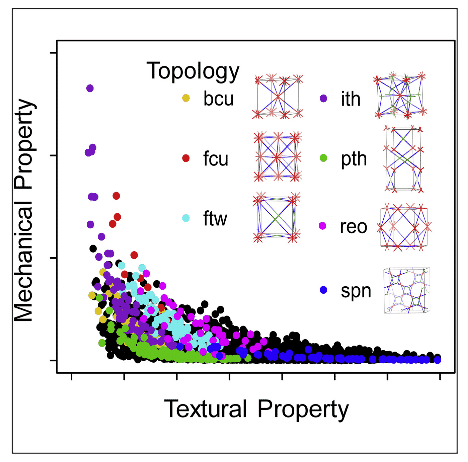Peer-Reviewed Paper
Artificial neural networks are introduced here as a powerful machine-learning algorithm not only to predict the mechanical properties of existing and yet-to-be-synthesized MOFs but also to elucidate the sensitivity of the mechanical stability window obtained on the topology. Topology is crucial for accurate machine-learning predictions of mechanical properties.

Moghadam et al. use high-throughput simulations and machine learning to derive structure-mechanical properties and predict bulk moduli of MOFs from a few physical parameters, thereby accelerating materials’ design and discovery. Their paper demonstrates how machine-learning approaches can significantly speed up theway materials are characterized and designed at their molecular scale. Using amulti-level computational approach, the authors delineate key structural features in metal-organic frameworks (MOFs) that influence their mechanical properties. Importantly, this study highlights the strength of artificial neural networks in producing MOFs with mechanical properties in a matter of seconds without the need forcomplex and time-consuming calculations or experiments. The results guide MOF researchers to assess and design structures with improved mechanical stability.
Publication details
Publication: Matter 1, 219–234 (2019)
Title: Structure-mechanical stability relations of metal-organic frameworks via machine learning
Authors: Peyman Z. Moghadam, Sven M.J. Rogge, Aurelia Li, Chun-Man Chow, Jelle Wieme, Noushin Moharrami, Marta Aragones-Anglada, Gareth Conduit, Diego A. Gomez-Gualdron, Veronique Van Speybroeck, David Fairen-Jimenez 8
DOI / Link: https://doi.org/10.1016/j.matt.2019.03.002

